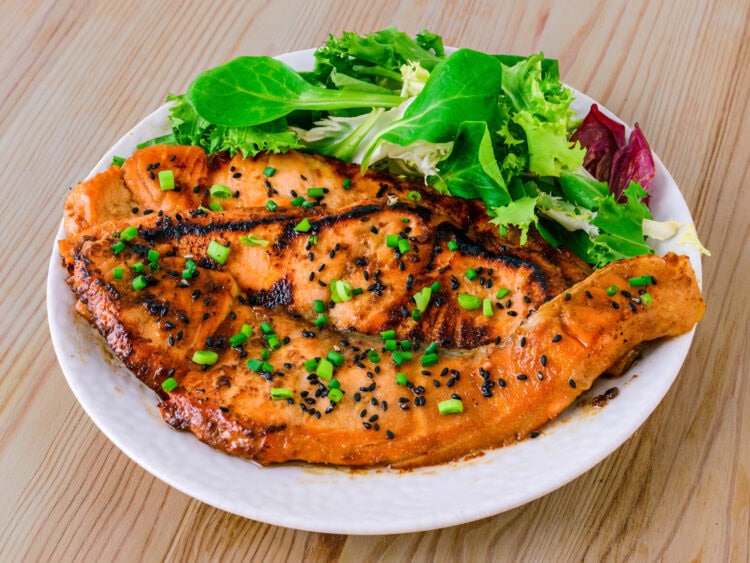Made with only three ingredients, miso salmon is a quick, flavorful dish that strikes the perfect sweet-savory balance. Because you can prepare it several days in advance, it is ideal for a busy weeknight.
Miso-Glazed Salmon: What Is It?
In Japan, Miso Salmon (鮭の味噌漬け) belongs to a category of dishes called Misozuke (味噌漬け), which literally means “marinated in miso”.
The fish is marinated in sweet white miso, which draws out excess moisture from the salmon, preserving it for up to a week while seasoning it at the same time. It is sometimes called Saikyouzuke (西京漬け), after the light-colored, mildly fermented miso used around Kyoto. For those in the know, it is roughly the Japanese version of gravlax.

The History of Miso-Marinated Salmon
The technique of marinating food in miso dates back more than a thousand years, but the first written record of preserving fish this way comes from Kyoto about 500 years ago.
Japan’s capital for more than 680 years, Kyoto sits 65 kilometers inland. Before the bullet train, which now covers the distance in just 13 minutes, and before modern refrigeration, the trip from the port city of Osaka took at least a full day, so preserving fish for the journey was essential.
Originally, miso-marinated fish was an expensive delicacy served before formal tea ceremonies. During the Meiji period, however, when Japan moved its capital to Tokyo in 1868, this practical and delicious preparation spread throughout the country.

Zuke: Marinated Fish
The suffix “zuke” (漬け) means marinated, and in addition to Misozuke, there are other styles such as Kasuzuke (粕漬け), cured in sake lees, and Mirinzuke (みりん漬け), marinated in mirin.
There are three ways miso preserves fish:
- The salt in the marinade inhibits microbial growth.
- The salt draws out excess water through osmosis, extending the fish’s shelf life.
- Unpasteurized miso (and sake lees) contains a filamentous fungus called koji, whose fermentation offers additional preserving power.
Key Ingredients for Miso-Marinated Salmon
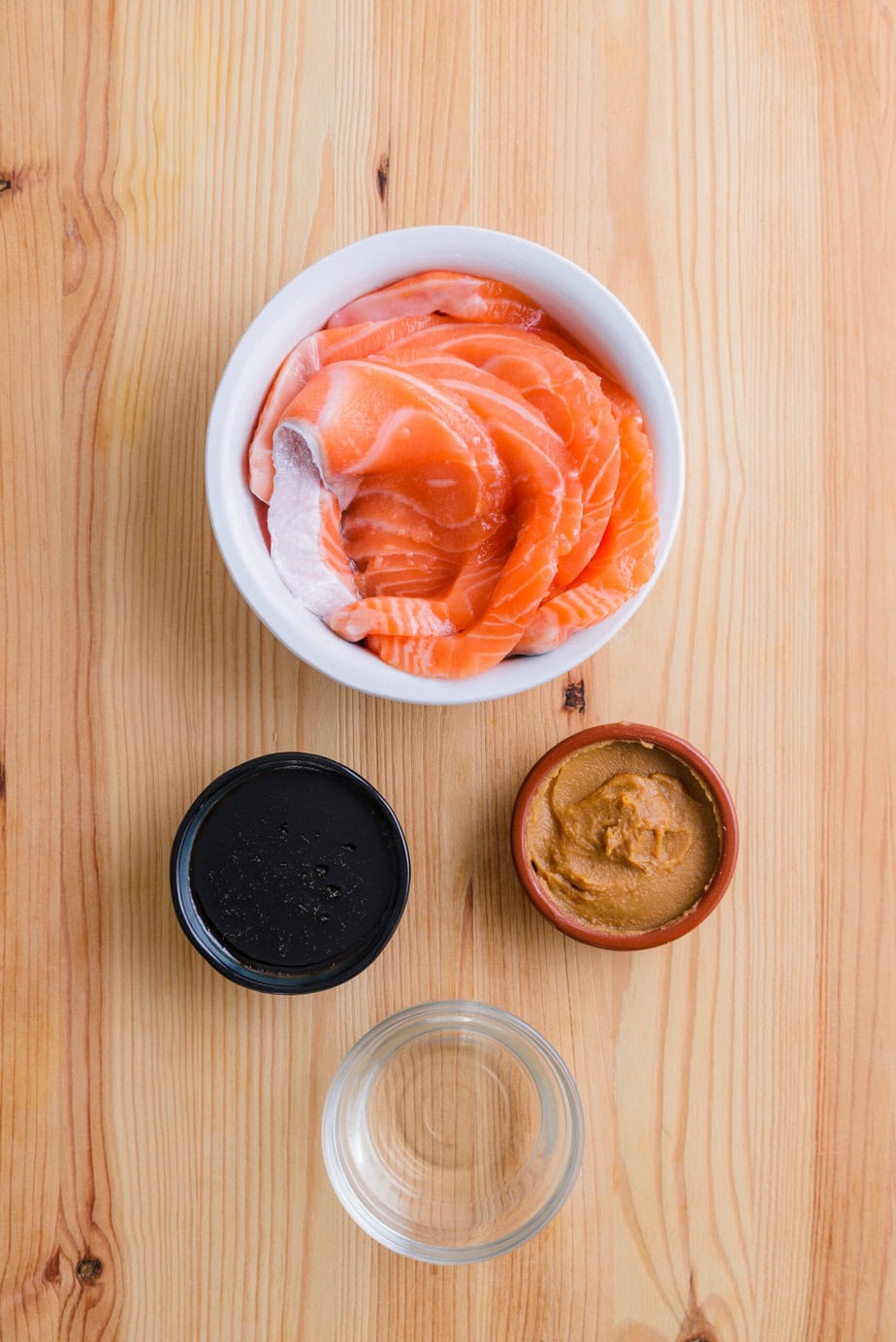
Many Western chefs bolster their miso with garlic, ginger, and sesame oil, but traditional Misozuke calls for nothing more than miso, sake, and, depending on the miso, a touch of sugar.
Feel free to add your own twist, but I love the simplicity of the classic version because it showcases the fish, balancing nutty miso with the gentle umami sweetness of sake. If you want to experiment, start by swapping out the miso.
There are dozens of misos, their colors ranging from pale lemon to deep coffee black. I usually choose a lighter miso for fish because its shorter fermentation makes it milder.
That said, salmon has a robust flavor and can stand up to a darker miso. You can even blend several misos to create your own mix.
The sake in the marinade serves two roles: it thins the miso so it spreads easily, and its amino acids boost the marinade’s umami while adding a hint of sweetness.
When choosing sake, it does not have to be expensive, but pick one you would be happy to drink. “Cooking sake” is very low quality and contains salt and other additives to avoid alcohol taxes.
If you are using Saikyo miso, there is no need to add sugar, but most other misos contain very little residual sweetness.
You can use mirin, but genuine mirin is hard to find outside Japan; most products are alcohol mixed with flavorings and corn syrup. That is why I prefer malted rice syrup, made in a similar process to mirin and rich in maltose, a sugar that gives the fish a glossy glaze without making it overly sweet.
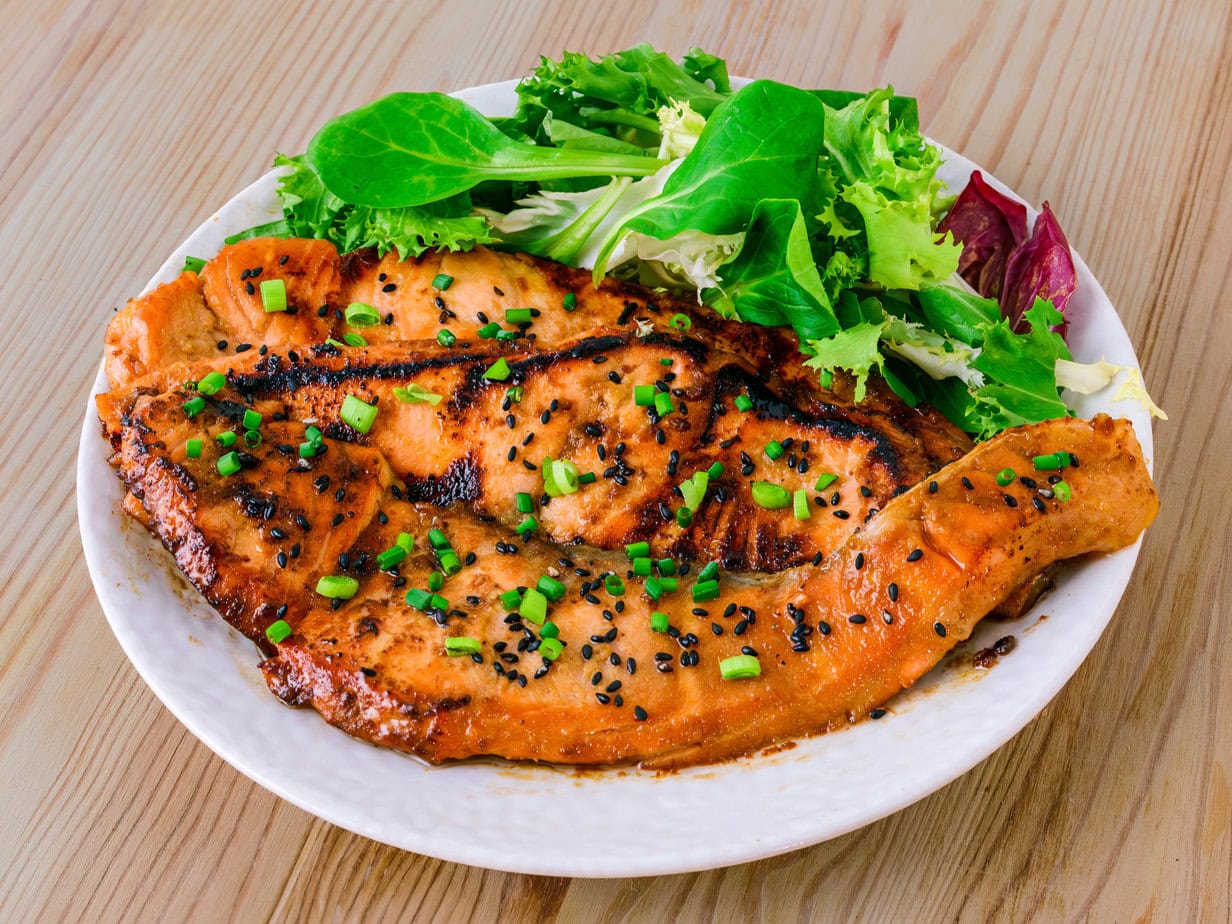
Miso-Cured Salmon
Ingredients
- 60 ml white miso yellow
- 60 ml brown rice syrup
- 2 tablespoons sake
- 450 grams salmon 4 thin fillets
- vegetable oil for cooking
Instructions
- In a bowl, mix together the miso, brown rice syrup, and sake until you have a smooth sauce.60 ml white miso, 60 ml brown rice syrup, 2 tablespoons sake
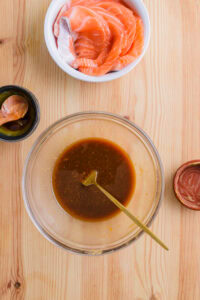
- Place a large sheet of plastic wrap on your work surface and spread a quarter of the sauce over it, roughly the size of 2 salmon fillets.450 grams salmon
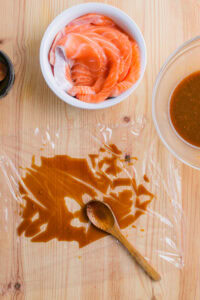
- Lay the salmon on top of the sauce, then pour another quarter of the sauce over the fish. Repeat with the remaining salmon.

- Wrap the salmon tightly in the plastic wrap, pushing out any excess air.
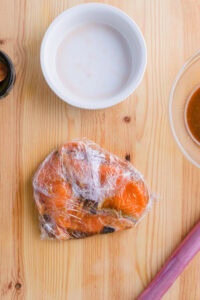
- Place the salmon on a tray and let it marinate in the fridge for at least 2 days.
Cooking
- Heat a pan over medium heat and add a little oil.vegetable oil
- Add the salmon skin-side up and use a spatula to ensure the fish is in full contact with the pan. The sugar in the marinade burns easily, so lower the heat if you notice the salmon browning faster than it cooks.

- When the salmon is golden on one side, flip it over and continue cooking until cooked through.

Notes
Nutrition
Culinary Sources
I adapted this recipe from the English-language blog “Norecipes”; the proportions were well balanced and perfectly suited to my taste.
